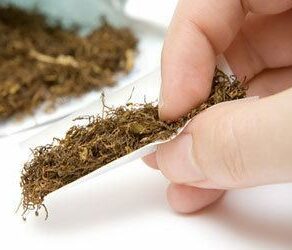
Question: What’s the best way to clean stiff, cakey deodorant stains from t-shirts?
Deodorant can build up on t-shirts over time and develop a crusty, thick stain that can be difficult to remove. Sometimes this is just a build-up of certain deodorants or it could be a reaction between the deodorant and the fabric softener used either in the wash or dryer. Regardless of how it got there, it’s uncomfortable to wear and tends to hold odors as well. Here’s what you need to know to get rid of this annoying stain and get your shirts looking and feeling great again.
You Will Need:
- Unseasoned meat tenderizer
- Vinegar
- Baking soda
- Ammonia
- Oxy Clean
- Aspirin
- Laundry detergent
- Water
- Spray bottle (optional)
- Soft scrub brush
- Paper towels or soft cloths
Steps to Remove the Stains:
There are several ways to treat these stains, choose an option from the steps listed below that works best with your time frame and/or materials that are available. If you are unsure if a product is safe for your material, test it on a small hidden area first, such as an inside seam. If your stains are from a deodorant and antiperspirant combination product, try using the vinegar solution first (steps 5-7).
*Always test a small hidden section first to ensure the cleaner will not cause any adverse effects to the color or texture of the fabric.
- Begin by mixing the unseasoned meat tenderizer with water to form a loose paste. Do not use this on wool, silk or any other protein-based material.
- Spread the paste over the stiff, stained area and rub it into the fabric.
- Allow the paste to set overnight on the stain.
- Wash as normal.
- A second option is to combine one part vinegar with one part warm water.
- Allow the stained areas of the shirt to soak in the solution for a couple of hours.
- Wash as normal.
- Oxy Clean is a commercial cleaner that is well-known for removing many types of stains. Apply a small amount to the area and scrub it gently. It may be helpful to allow it to soak for a short while as well.
- Wash as normal.
- Moisten a soft cloth with ammonia and dab at the stained area.
- Wash as normal.
- For yellowish armpit stains, make a paste with baking soda and water and spread it over the stained area.
- Allow it to set until it dries.
- Wash as normal.
- Dissolve two aspirins in ½ cup of water. Pour the mixture on the stain (for white garments only) and allow it to soak for several hours.
- Rub the area with laundry detergent and scrub gently with your fingers or a soft brush.
- Wash as normal.
- Sometimes the build-up needs a good scrubbing to get the stain to break down enough for the cleaners to work.
- If the stains are severe, after applying the cleaning solution, cover the stain with a small amount of laundry detergent and scrub with a scrub brush.
- Continue until the stain softens then wash as normal.
Additional Tips and Ideas
- If you get deodorant on your shirt as you are getting dressed, rubbing it with pantyhose will remove it instantly.
- Some have had luck switching to an antiperspirant instead of a deodorant. It may also help to switch fabric softeners.









What if the item is wool, and dry clean only? Can you still do this?
Tip #2 is backward – It is the antiperspirant that is causing the stains and a switch to just plain deodorant (with an overnight anti-antiperspirant like Certain Dri) will significantly reduce the yellow caking buildup.
This happens on everything I wear, even for one day, and I don’t think I sweat that much. I’ve changed deodorants, even clear deodorant does this. My stains are grayish and brownish. Is this a product problem or a person problem? Can these steps work with my weird color stains?
Anna,
It could be either. A common cause for deodorants causing colored stains is aluminum in the deodorant. Try switching to an aluminum-free deodorant.
If you don’t sweat much anyway, try going without any deodorant, or just spraying a little perfume on the armpit areas outside your shirt.
If it’s a personal problem, it would have to do with the color of your sweat. Smokers tend to have brown or yellow sweat stains due to the tobacco.
If you find that it is a personal problem, you can help manage your sweat amount and smell through your diet.
Source: Home Ec 101 – What Causes Black Underarm Stains and How to Prevent Them
Source: Medical Daily – You Are What You Eat: 6 Smelly Foods That Are Actually Giving You Bad Body Odor
Will any of these options stain? I’m looking for a solution for the hardened stains on my husband’s work shirts. Button down, business shirts.
Kat,
The only way to know for sure is to test a cleaning solution on a small hidden area of the shirt first, such as along the inside of a hem. Every shirt is different. Even laundry detergegnt can leave stains (if it contains dyes, etc.).
Another option is to use a deodorant crystal that can be purchased from a health food store. I had to use one during radiation.
For underarm sweat and deodorant stains, wet the area, apply a teaspoon of Jif and scrub inside and outside with a nail brush, then wash normally. Works best on finer weave cloth like a business shirt, but also works on T-shirts quite well.
Do you mean the peanut butter Jif?? I’m very curious as to how and why this would work…& wouldn’t you then have to deal with oil stains? Is there another product named Jif that I’m unaware of? So curious!
This is the cleaning agent jif. Its main ingredient is baking soda or bicarbonate sodium.
Sorry. I did not give enough information in the first post. Jif is a Unilever cleaning product. It is slightly abrasive. So it seems that the cleaning process is more mechanical than chemical. This would also be supported by the fact that smoother materials like business shirts are easier to clean than rougher ones like T-shirts. I have never tried it on woollen clothes. I use the lemon scented Jif because it leaves a lingering scent of citrus and gets rid of the stale sweat odour. But beware, because of the scrubbing and abrasiveness of the cleaning process it will eventually wear away the cloth and stitching. In my experience, it has not yet taken the colour out of my blue cotton business shirts. I suspect that there is no perfect solution.
Thank you for this site. It deals with just about everything I could imagine, except milk of magnesia which I use as a deodorant. Eventually white/grey discoloration and texture change occurs in the armpits of my clothing that nothing seems to remedy. Any ideas??
Jhiga,
Here are some suggestions:
1) Try using white vinegar. Magnesium hydroxide (milk of magnesia) reacts with acids, so if the texture change you are seeing or the stain itself is caused by residue, then the white vinegar should work to break it down. You may want to test this on a shirt you don’t like much first to see if there is any damage from the reaction.
2) Try using an enzyme cleaner made for pet stains, such as Kids ‘N’ Pets or Nature’s Miracle. These are available in the pet aisle of most major supermarkets.
3) Try using Bufferin (asprin that contains magnesium oxide) as described in step 15. This may work due to the principle of ‘like dissolves like’.
4) The baking soda method in step 12 might also work since it has the same pH as the milk of magnesia.
5) When in doubt, try OxiClean.
Good luck!
Source: YouTube – Magnesium and 35% Acetic Acid (Vinegar)
Source: Chemistry LibreTexts – Acid-base Behavior of the Oxides
I tried some experiments and have found that so far, nothing breaks down deodorant.
I have taken small pieces and soaked it in:
Boiling water
Vinegar
Ammonia
Alcohol
Baking Soda
An eco-friendly solvent that removes all kinds of things, even super glue.
So far nothing can dissolve the stuff. The last thing I can think of is paint thinner like gasoline.
That or radioactive uranium.
Dave,
Here are a few more ideas.
1) Try rubbing the stains with womens pantyhose; not kidding.
2) Try doing a combination of vinegar and baking soda, which will create a lot of fizzing and might work to remove the stains – sprinkle on some baking soda, then pour on a little white vinegar.
3) Another idea is to put them in a glass of water and drop in a denture tablet.
4) You can also try OxyClean.
5) Switching deodorants might be a good idea as well – prevent the problem from happening in the first place.
Good luck!
Don’t half of these remedies remove colour also? I have T-shirt with white stains, but removing them with vinegar, hydrogen peroxide, etc. will just remove the colour as well, won’t it? Then I’m left with a pale patch anyway.
Georgie,
You are correct that peroxide can act as a mild bleach on fabric dyes, however peroxide is not one of the recommended treatments for deodorant stains. Vinegar tends to brighten and set fabric colors, which is one of the reasons why it’s often used in laundry, however, every garment is unique, so it is always recommended that any new product be tested on a small hidden area first, such as an inside seam. If any dye is lightened or removed during tbe treatment process, see the guide How to Remove Bleach Stains from Fabrics for some methods to restore the dye. Good luck!
Those ingridients cost more than a new shirt; buy a new shirt.
Hi Damon,
One one (hopefully) incredient is needed, however many are listed that can work for you to choose from based on what you already have at home. Hope this helps!